Coffee Beans vs. Espresso Beans: 3 Big Differences

Heads up: This content is reader-supported, meaning we may earn a small commission if you click on some of our links.
Brewing delicious coffee shouldn’t be complicated. But it can certainly feel that way at times.
Even the coffee beans are confusing. Coffee beans vs. espresso beans? Light roast vs. dark roast? Are espresso beans different from coffee beans?
While we can’t cut through all the noise in one article, we can help you understand the difference between coffee and espresso beans.
Here, we’ll point you in the right direction toward choosing the right beans for all of your brewing needs. After all, quality coffee beans are at the root of every delicious cup of coffee.
Table of Contents
Coffee Beans vs. Espresso Beans
The Difference Between Espresso Beans And Coffee Beans
Are coffee beans and espresso beans the same? Yes and no. So, what is the difference between espresso and coffee beans?
An espresso bean is technically a coffee bean. There is no particular type of bean used to make espresso. So, in a sense, regular coffee and espresso beans are the same.
But not quite. All espresso beans are coffee beans, but not all coffee beans are espresso beans. Then what’s the difference between espresso beans and coffee beans?
What makes espresso beans different from coffee beans is the roasting process and grind size (more on that later). An espresso bean is simply a coffee bean that’s roasted for a longer time.
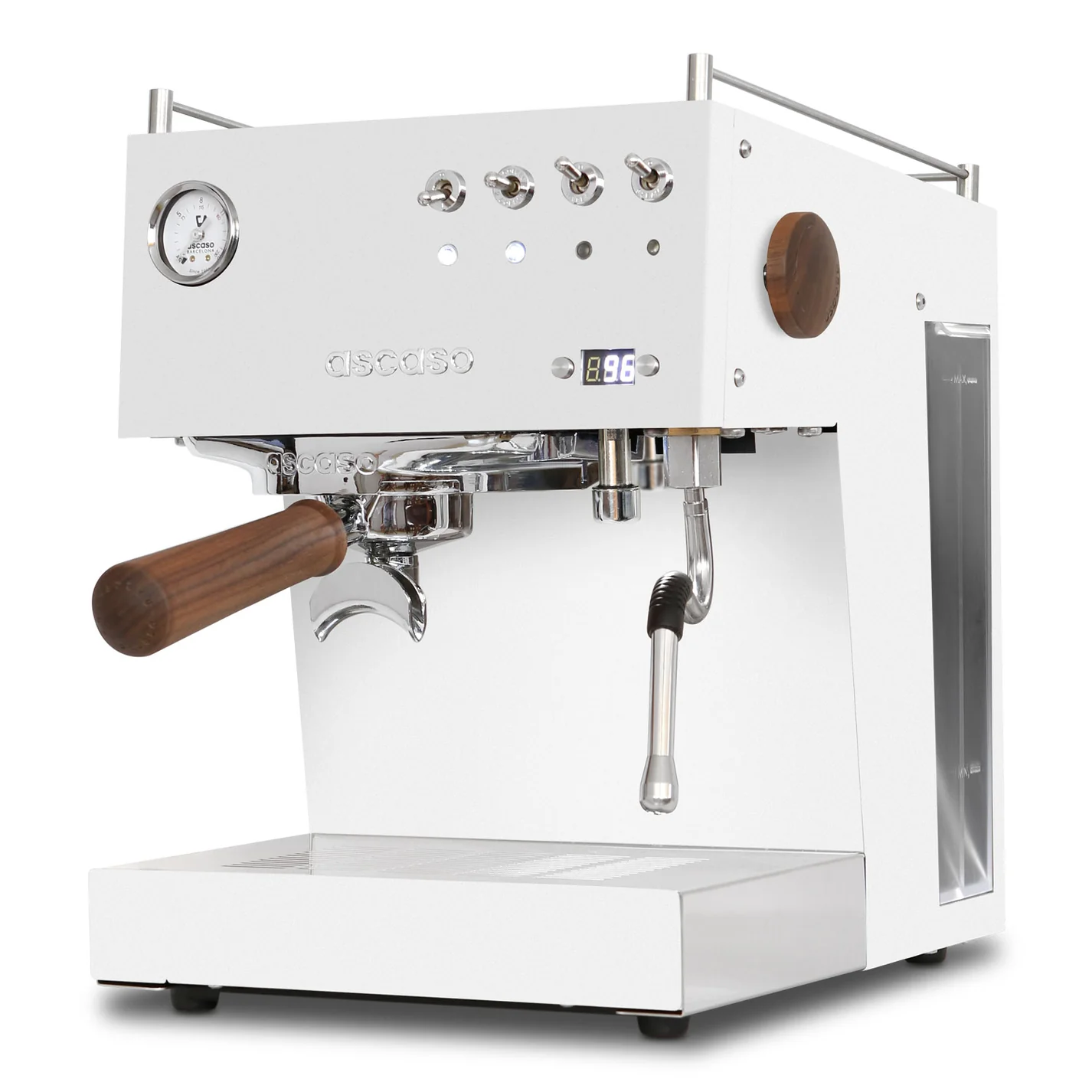
This extra roasting time results in a darker bean that is more oily and less acidic than its lighter counterparts. The coffee roasting scale includes light roast, medium roast, medium-dark roast, and dark roast levels. Espresso beans fall into the dark roast (or espresso roast) category.
(Technically, there is an extra dark roast category, but we can’t recommend those beans to anyone we like. Unless, of course, that person happens to enjoy the taste of liquid ash.)
Let’s take a deeper look at each coffee roast level to help you determine which beans are best for your needs: coffee beans vs. espresso beans.
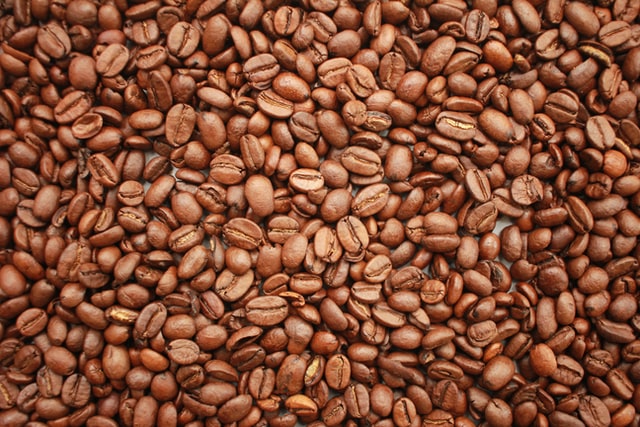
Light Roast
Light roast coffee beans are golden brown in color with a matte exterior (no oils released during roasting). They are sometimes referred to as Light City Roast.
Light roasts have recently gained popularity, as the quality of coffee beans has improved in recent years, and roasters can be incredibly creative with their lighter roasts. In fact, many coffee enthusiasts are changing their ways and leaning toward the flavor nuances of light roast vs. dark roast coffee. Light roast coffee beans are known for their complex, bright, and often fruity notes.
Despite the deceptively light color, more caffeine and acidity are retained in light roast beans because they are roasted less than other coffee beans.
Yep, you read that right. Light roast coffee beans have more caffeine than dark roast (espresso) beans. Light roast coffee beans are best used in manual brewing methods like pour over and cold brew.
But can you use espresso beans for cold brew instead? Of course, you can.
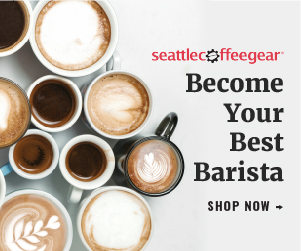
Medium Roast
Medium roast coffee beans are roasted slightly longer than light roast but not long enough to release the oils from the beans. They have a medium-brown color with minimal sheen.
Medium roasts are the most common coffee beans you’ll find in America. They are the most versatile and work well for various brewing methods.
The nuances in medium roast coffee beans are primarily determined by where the coffee beans are grown. Medium roast beans are the best coffee beans to try if you’re new to coffee brewing and want to try several brewing methods.
Medium-Dark Roast
Medium-dark roast coffee beans, also known as Full City Roast, are darker in color than medium roast beans, with a slight sheen to the surface due to the oils released during roasting.
Medium-dark roast beans have a more complex flavor profile than medium roast and offer more bittersweet, dark chocolate flavor nuances. Medium-dark roast beans are another fantastic option for those who switch between brewing methods, as this darker roast can be used for an espresso shot in a pinch.
In fact, medium-dark roast beans are ideal for brewing espresso-forward beverages. We think medium-dark roast beans are actually the best coffee beans for cappuccinos and flat whites.

Dark Roast
Dark roast beans, often referred to as French Roast, are very dark, almost black, with a gleaming exterior.
Dark roasts offer more of the charred, smoky flavor notes we’ve come to expect in espresso but are smoother and less acidic than other roasts. Dark-roasted coffee beans are traditionally used for espresso and are not well suited for standard drip brewing or other manual brewing methods (pour over, french press, etc.).
Is dark roast coffee the same as espresso? When it comes to the beans, yes.
When many refer to espresso beans, they typically refer to dark roast coffee beans. So, essentially, espresso beans and coffee beans are the same. The term “espresso bean” is confusing. Using the term “espresso roast” instead makes it simpler: coffee is coffee. What makes espresso beans different than coffee beans lies in how you brew the beans.
So, which coffee beans are best for cappuccino? Yep, you guessed it. Many would argue that the best cappuccino coffee beans are dark roast. (but for us, the best coffee bean for cappuccino is medium dark)

Grind Size: Espresso Bean vs Coffee Bean
As we mentioned, another difference between regular coffee beans vs. espresso beans is the grind size used for brewing. Every brewing method requires a different grind size for optimal results. A quality grinder is necessary to achieve a consistent grind appropriate for your brewing method.
The best grind size for espresso is fine. The consistency of the ground coffee should resemble table salt. This is finer than what you would use for drip coffee and much finer than the grind size for French press or pour over.
We always recommend grinding your own beans using a high-quality burr grinder. Grinding the beans yourself will ensure consistency in the grind size, keep your beans fresh longer, and allow you to experiment with multiple grind sizes and brewing techniques.
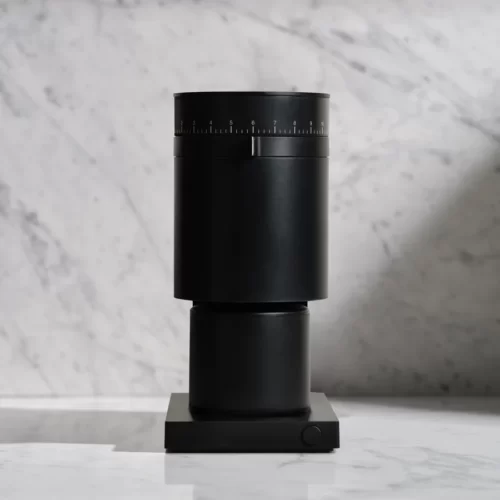
Caffeine Content: Espresso Bean vs Coffee Bean
Are espresso beans stronger than coffee beans? Another slight difference between coffee beans vs. espresso beans is the caffeine content.
Contrary to popular belief, dark roast coffee does not contain more caffeine than light roast coffee. In fact, it’s just the opposite. Light roast coffee beans spend less time under heat and have less caffeine and acidity extracted during the roasting process. Now, keep in mind that the difference here is marginal.
The caffeine content difference between coffee and espresso lies in the brewing process. But even when brewed with the same beans, espresso and regular coffee do not have the same caffeine. So, when it comes to caffeine, what is the difference between espresso beans and coffee beans?
Espresso has a much higher caffeine content per ounce than traditional coffee. According to the Mayo Clinic, espresso has 64 mg of caffeine per ounce. An 8-ounce cup of coffee, by comparison, has 96 mg of caffeine.
While this difference is significant, espresso is typically consumed in 1-2 ounce servings (or shots), so the average espresso beverage contains 64-128 mg of caffeine.

How To Store Coffee Beans Properly
So now that you know more about coffee beans vs. espresso beans, you can confidently buy that 2-pound bag of your favorite coffee beans from Costco.
But wait, how should you store coffee beans? Regarding proper storage, are espresso beans the same as coffee beans? Yes. Despite their subtle appearance differences, espresso and coffee beans should be stored similarly.
It’s pretty simple, actually. If your coffee came in a foil bag with a one-way air filter (let’s air out but not in), leave it there. Simply seal the bag with a couple of clips and store it in a cool, dark place away from any heat sources.

The coffee will last you up to 2 weeks after opening by doing so. If your coffee comes in a paper bag, transfer it to an airtight container and store it in a cool, dark place.
If you went a little crazy and purchased a range of roasts to compare coffee beans vs. espresso beans for yourself, resist the temptation to refrigerate your coffee beans. Refrigeration actually ages the coffee faster when condensation pushes the oils to the surface of the beans.
If you really need to store coffee beans longer than a few weeks, the freezer is your best option. We recommend dividing the coffee beans into small, airtight containers to avoid freezer burn. The catch?
You’ll need to fully thaw the beans before grinding and brewing. What was once a convenient morning beverage is not so anymore.
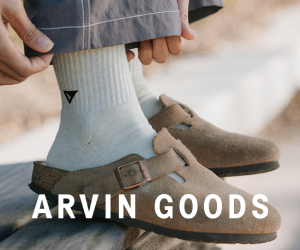
Closing Thoughts: Are Espresso Beans And Coffee Beans The Same?
Whether you prefer light roast vs. dark roast, traditional drip coffee, pour over, french press, or espresso, the coffee bean makes all the difference in the quality of your morning coffee.
So, what is the difference between coffee and espresso beans? Are espresso beans and coffee beans the same thing? Not exactly. While there are only subtle differences between coffee beans vs. espresso beans, these differences have a considerable impact on the flavor of your coffee.
The only way to determine whether you prefer coffee beans or espresso beans is to try them out yourself. The best coffee beans to try are the ones that suit your brewing style.
Can all coffee beans be used for espresso? Sure, all coffee beans can be used for espresso. Just know that using light roast coffee beans for espresso will produce a milder flavor with less of the bitter chocolate notes you’d expect from espresso.
Can you use espresso beans for pour over? Sure you can. While many prefer a light or medium roast for pour over coffee, we love a bold batch!
Can you use espresso beans for cold brew? Absolutely! We love a medium-dark roast when we’re cold brewing coffee. Those who prefer a bolder brew can use espresso beans for cold brew and still enjoy nuance and depth of flavor.
Frequently Asked Questions
Do the type of espresso beans used make a difference in the final product?
Yes, the type of espresso beans used can make a significant difference in the final product. Different beans have different flavors, aromas, and textures, which can affect the taste and quality of the espresso.
What type of bean is best for making espresso?
The best type of bean for making espresso is Arabica. Arabica beans are known for their delicate flavor and low acidity, which makes them perfect for espresso. However, many blends also include Robusta beans, which can add a rich crema to the espresso shot, plus an extra boost of caffeine.
What are the best Italian espresso beans?
Some of the best Italian espresso beans are Lavazza Super Crema Espresso, Illy Espresso, Segafredo Intermezzo, and Kimbo Espresso Napoletano. These beans are known for their rich flavor, aroma, and crema, which are characteristic of Italian espresso.
What are the differences between espresso beans and coffee beans?
Espresso beans are roasted longer and darker than regular coffee beans, which gives them a stronger and bolder flavor. Espresso beans are also ground finer than coffee beans, which allows for perfect extraction and a more concentrated shot of espresso.
What are the best espresso beans for a Breville machine?
The best espresso beans for a Breville machine are any that are freshly roasted and ground. Some favorite options include Lavazza Super Crema Espresso, Intelligentsia Black Cat Espresso, and Blue Bottle Coffee Bella Donovan. These beans are known for their rich flavor and smooth texture, which are ideal for a Breville machine.
What are some of the best espresso coffee brands?
Some of the best espresso coffee brands include Lavazza, Illy, Segafredo, Kimbo, Intelligentsia, Blue Bottle Coffee, and Stumptown Coffee Roasters. These brands are known for their high-quality beans, rich flavor, and smooth texture, which are ideal for making espresso. Remember to always look for a “roasted on” date on your coffee; this date is far more important than the “best by” date, which is highly subjective.
ABOUT THE AUTHOR
Heather Calatrello
Heather is the head coffee roaster and founder of ShedLight Coffee Roasters in San Diego, CA. Her solar-powered coffee roastery was recently the subject of a BlueDot Living dispatch, and she has repeatedly been featured in Food & Wine, Real Simple, Parade, and more.

